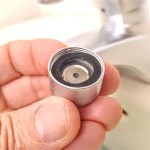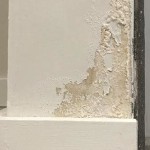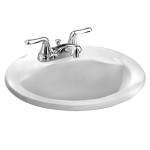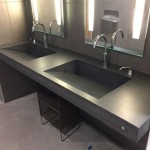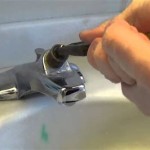```html
How to Remove a Bathroom Sink Top: A Comprehensive Guide
Removing a bathroom sink top, also known as a countertop, is a task frequently undertaken during bathroom renovations, repairs, or when replacing a damaged sink. While it may seem daunting, with the correct tools, careful planning, and adherence to specific steps, the process can be managed effectively. This guide provides a detailed explanation of how to safely and efficiently remove a bathroom sink top.
Preparation and Safety Precautions
Prior to commencing any work, thorough preparation is paramount. This includes gathering the necessary tools and implementing essential safety precautions. The following steps outline these initial stages:
1. Gather Necessary Tools: The tools required for this project are relatively standard and likely available in most home toolboxes. These typically include:
- Adjustable wrench: For disconnecting plumbing connections.
- Pliers: For gripping and manipulating small parts.
- Screwdrivers (Phillips and flathead): For loosening and removing screws.
- Utility knife: For cutting sealant or caulk.
- Putty knife or scraper: For separating the countertop from the cabinet.
- Safety glasses: To protect eyes from debris.
- Gloves: To protect hands and provide a better grip.
- Bucket: To catch water when disconnecting plumbing.
- Towels or rags: To clean up spills and protect surfaces.
- Flashlight or work light: To improve visibility in dimly lit areas.
- Oscillating multi-tool (optional): For cutting through stubborn adhesives or caulk.
2. Implement Safety Precautions: Safety should be the primary concern throughout the entire process. Taking the following precautions minimizes the risk of injury:
- Turn off the water supply: Locate the shut-off valves under the sink and turn them off clockwise. This prevents water from flooding the area when disconnecting the plumbing.
- Disconnect the electricity: If the sink has an electrical outlet nearby, turn off the corresponding circuit breaker in the electrical panel to avoid electric shock.
- Protect the surrounding area: Cover the floor with a drop cloth or old towels to protect it from scratches and spills.
- Wear safety glasses and gloves: This protects the eyes from dust, debris, and splashing water, and the hands from sharp edges or contaminants.
Disconnecting Plumbing and Electrical Connections
Before detaching the sink top, it is crucial to disconnect all plumbing and electrical connections meticulously. Failing to do so could result in water damage, electrical shock, or damage to the plumbing and electrical systems. The subsequent instructions detail this process:
1. Disconnect Water Supply Lines: Place a bucket under the water supply lines to catch any residual water. Use an adjustable wrench to loosen the compression fittings that connect the supply lines to the faucet tailpieces. Carefully remove the supply lines and drain any remaining water into the bucket. It may be necessary to use pliers to loosen stubborn fittings. Inspect the supply lines for wear and tear; if they appear damaged, consider replacing them.
2. Disconnect the Drain Assembly: The drain assembly typically consists of a P-trap, tailpiece, and drain flange. Use an adjustable wrench to loosen the slip nuts that connect the drain assembly components. Disassemble the drain assembly piece by piece, allowing any remaining water to drain into the bucket. Be cautious when handling the drain assembly, as it may contain stagnant water and debris. Clean the drain components with a mild detergent and water before storing them.
3. Inspect and Disconnect Electrical Outlets (If Applicable): If the sink has an electrical outlet, ensure the circuit breaker is turned off. Carefully remove the outlet cover plate and inspect the wiring. Use a voltage tester to confirm that the power is off. Disconnect the wires from the outlet terminals, taking note of their positions. Cap the wires with wire connectors to prevent accidental contact. Reinstall the outlet cover plate.
Detaching the Sink Top from the Vanity
The method of attachment for a bathroom sink top varies depending on its construction and installation. Countertops may be secured with adhesive, screws, clips, or a combination of these methods. A systematic approach is essential to safely and effectively detach the sink top from the vanity cabinet.
1. Identify Attachment Methods: Carefully inspect the underside of the sink top and the interior of the vanity cabinet to identify the attachment methods used. Look for screws, clips, or beads of adhesive. If adhesive is present, determine its type and strength. Some adhesives are easily cut with a utility knife, while others require more aggressive methods.
2. Remove Screws and Clips: If screws or clips are present, use the appropriate screwdriver or pliers to remove them. Place the removed hardware in a labeled container to prevent loss. Note the location of each screw or clip to facilitate reinstallation if you are planning to reinstall the same sink top.
3. Cut Through Adhesive or Caulk: Use a utility knife to carefully score the area where the sink top is attached to the vanity cabinet. Work slowly and apply steady pressure to cut through the sealant or adhesive. If the adhesive is particularly stubborn, an oscillating multi-tool with a scraper attachment can be used to cut through it. Be cautious when using the oscillating multi-tool to avoid damaging the vanity cabinet or the sink top.
4. Separate the Sink Top: Once all screws, clips, and adhesives have been removed or cut, gently attempt to lift the sink top from the vanity cabinet. If the sink top does not lift easily, recheck for any remaining attachments. Use a putty knife or scraper to gently pry the sink top from the cabinet, working around the perimeter to loosen it evenly. Avoid using excessive force, as this could damage the sink top or the vanity cabinet.
5. Lift and Remove the Sink Top: With assistance if necessary, carefully lift the sink top from the vanity cabinet. Handle the sink top with care to avoid dropping or damaging it. Place the sink top on a protected surface, such as a drop cloth or old towels.
Cleaning and Preparation for Reinstallation or Disposal
After removing the sink top, thorough cleaning of the vanity cabinet and preparing the area for either reinstallation or disposal of the old sink top is crucial. This step ensures a clean working surface and facilitates the installation of a new sink top, if applicable.
1. Clean the Vanity Cabinet: Remove any remaining adhesive, caulk, or debris from the top of the vanity cabinet. Use a scraper and a solvent-based cleaner to remove stubborn residue. Inspect the vanity cabinet for damage and make any necessary repairs. Allow the vanity cabinet to dry completely before proceeding.
2. Inspect and Repair the Wall: Examine the wall behind the sink for any signs of water damage or mold growth. Repair any damaged drywall or plaster. Apply a fresh coat of paint or sealant to protect the wall from future moisture.
3. Prepare for Reinstallation or Disposal: If you are planning to reinstall the same sink top, clean it thoroughly with a mild detergent and water. Inspect it for damage and make any necessary repairs. If you are disposing of the old sink top, check with your local waste management authority for proper disposal procedures. Some materials, such as porcelain or stone, may require special handling.
By following these detailed instructions, the removal of a bathroom sink top can be accomplished safely and effectively. It's imperative to note that specific sink top installations may vary slightly; therefore, exercising caution and adapting the provided guidance to the particular situation is always recommended.
```
How To Remove Vanity Tops
:max_bytes(150000):strip_icc()/7_remove-vanity-top-56a4a26d3df78cf772835b2d.jpg?strip=all)
How To Remove A Bathroom Vanity Cabinet

How To Remove Vanity Tops

How To Remove A Sink Stopper The Home Depot


How To Install A Bathroom Vanity

How To Remove A Sink Stopper The Home Depot

How To Remove Vanity Tops

How To Remove And Replace A Bathroom Sink Diy

How To Remove A Bathroom Vanity And Top
Related Posts
